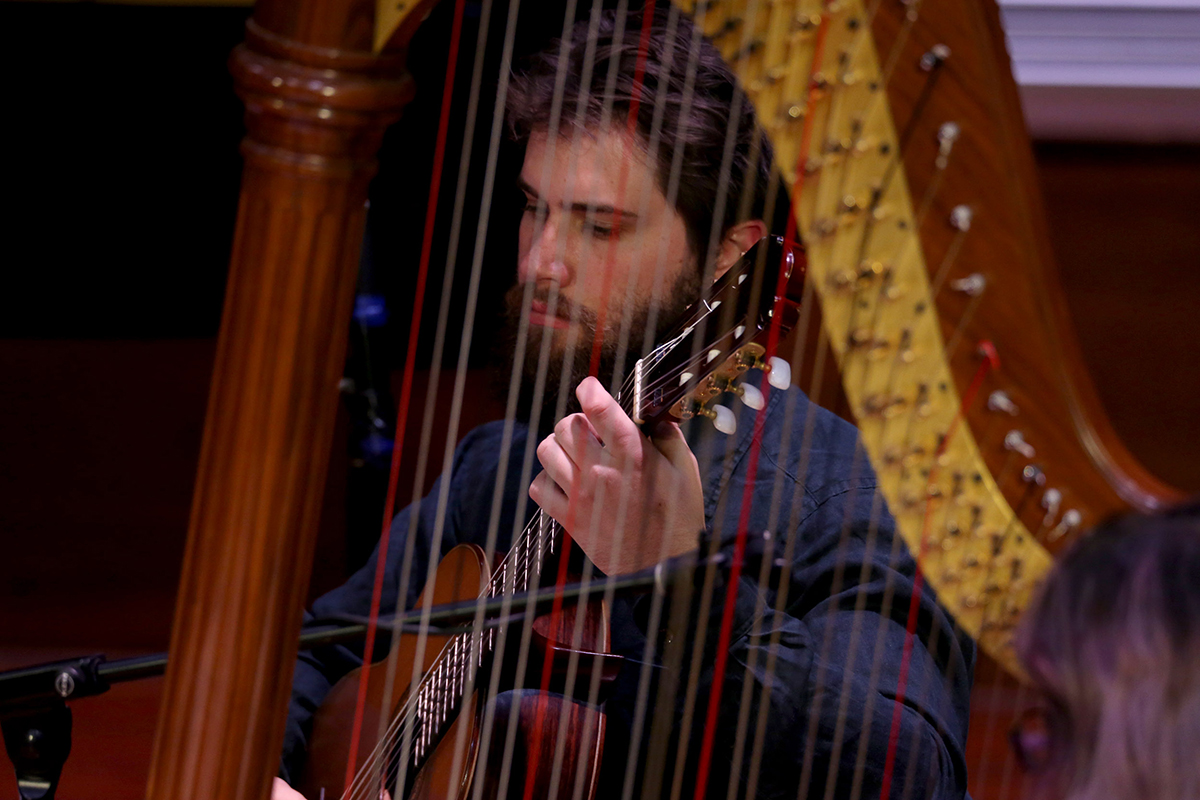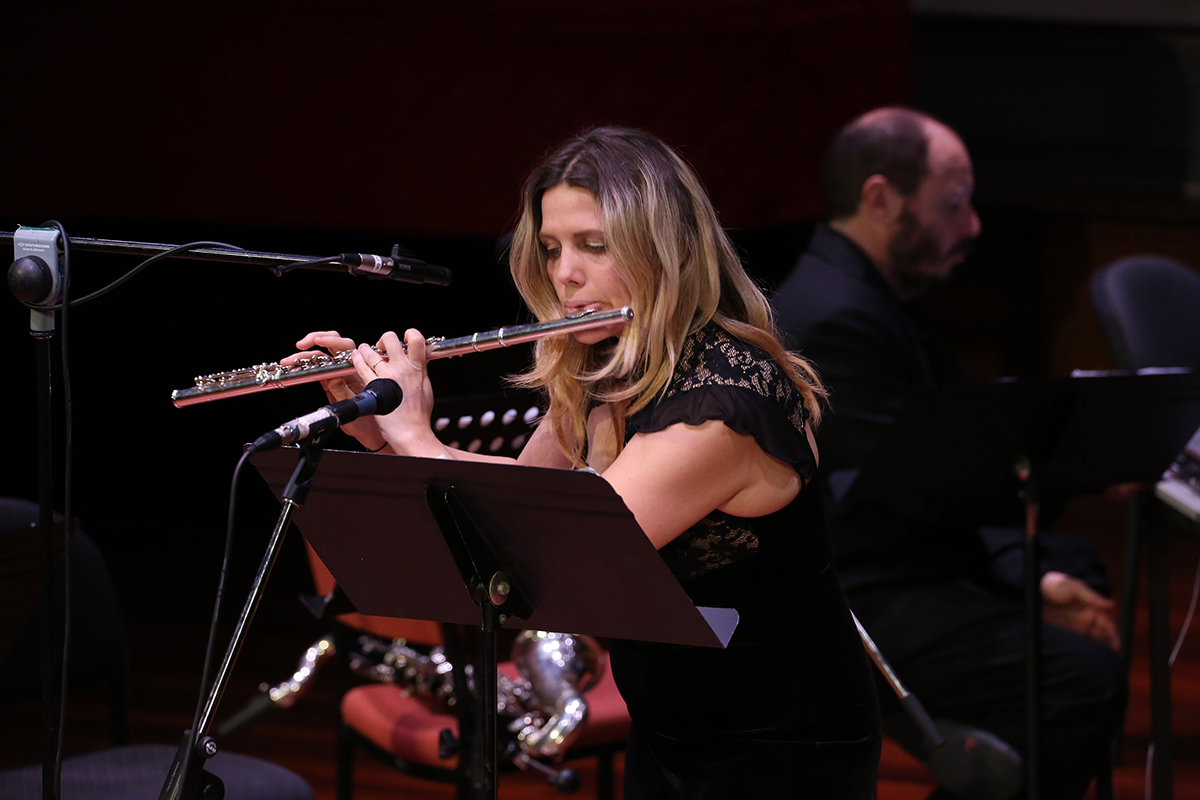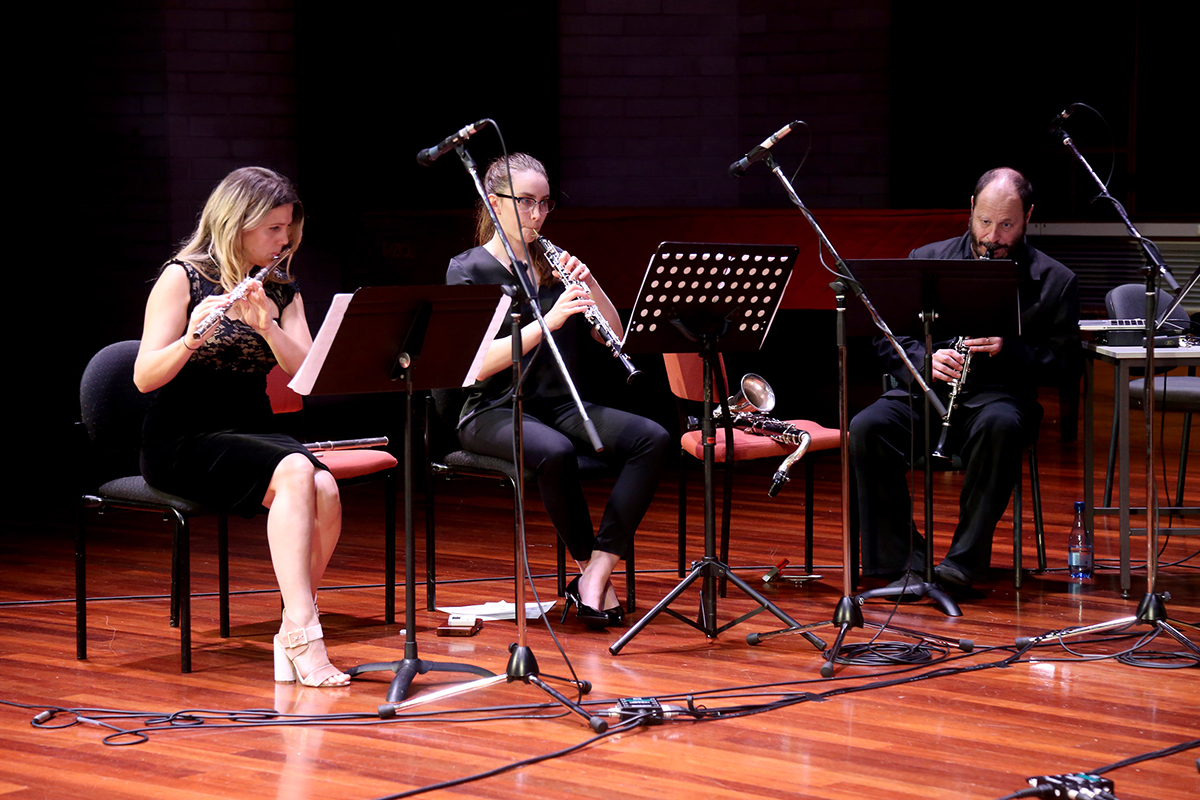
GreyWing: back to & forward from Modernism
Composer and performer (and, declaration, fellow staff member) Lindsay Vickery’s latest project is GreyWing, an ensemble founded last year with a core membership of himself on saxophone, clarinet and electronics, Catherine Ashley on harp and Jameson Feakes on guitar. In Tura New Music’s Scale Variable series, Vickery’s program for a concert titled Rio 1917 drew on artists from his local and international connections and his role as Coordinator of Composition and Music Technology at the Western Australian Academy of Performing Arts. Performers and composers included WAAPA staff members (composer Pedro Alvarez, guest keyboardist Stewart Smith), former students (GreyWing members Ashley and Feakes and guest flautist Kirsten Smith) and WAAPA-trained composers Sam Gillies, Alexander Turley, Ellie Cumming and Eduardo Cossio.
Vickery’s starting point for his programming was the visit to Brazil by French composer Darius Milhaud in 1917 where he worked with that country’s greatest composer, Heitor Villa-Lobos. The latter’s lovely Modernist pastoral, Sexteto Mistico, opens the concert. New works by Gillies, Turley, Cumming and Vickery use details of Villa-Lobos’ piece as the inspiration for new works (although the musical similarities are indirect), and further South American influence is presented in compositions by Chilean expatriate Alvarez, Peruvian expatriate Cossio and Brazilian Felipe Lara.

Kirsten Smith, Rio 1917, WAAPA, photo Bohdan Warchomij courtesy TURA New Music
Given the central place of musical Modernism, Surrealism and Impressionism in the programming, this is definitely not a Latin music concert as the phrase normally suggests. The material is extremely diverse, ranging from the slightly Gothic, Bernard Herrmann-esque feel of the Villa-Lobos sextet, through to some surprisingly approachable pop fusion in the mode of The Necks (Turley’s Nocturnal), while others are virtuosic explorations of formal instrumental challenges (Lara’s fabulous Parábolas na Caverna for flute). There are even pieces which approach acoustic noise-music (the controlled chaos of Cossio’s Ghost). Although several pieces draw on or evoke the pastoral, or music which would seem to suggest landscapes — Villa-Lobos’ sextet and Turley’s contribution, as well as Cumming’s pastiche-like Változó Évszakok, which evokes the repetitive canons of Philip Glass’ minimalism and even something of a John Barry feeling of light classical fusion. Overall however the effect of the programming is of rather extreme shifts in style as we are moved across a wide field of musical approaches.
Within this array, one highlight was Kirsten Smith’s grappling with Lara’s Parábolas, which demanded quick leaps from austerely minimal playing into rapid-fire, tongued sections accompanied by vocal interjections — almost a Berio Recital I (For Cathy) meets Ennio Morricone in its somewhat 1970s ambience. Smith is a physically expressive performer, her seesawing body describing parabolas in space while the music does the same. Still, I’m not quite sure she entirely nailed this very difficult piece, which could have used a dash more charisma and totalising precision. Cossio’s composition, with its intense rolling up and down of energies in a densely textured structure, was also striking, foregrounding the ensemble playing.
The standout work was Vickery’s own Liminario, which closed the program. Much of the composer’s previous work has involved feedback loops with MAX MSP computer processing, in which real time sound is processed, each new sonic addition changing the way sound further evolves or is processed, or sometimes how the score itself unfurls before the performer (Vickery has also reworked the variable scores of Karlheinz Stockhausen and others for notebook display and control; see here).

Ensemble, Rio 1917, WAAPA, photo Bohdan Warchomij courtesy TURA New Music
Liminario though is an acoustic piece, with neither amplification nor computer processing. The music is aggressive and stabbing. The wind instruments especially (flute, oboe and clarinet) smash and squeal in hard strikes of four, which recur to bracket sections. Despite these harsh structural elements, the work is very much an ensemble piece, with material widely shared. The specific tonalities of each instrument — including harp, electric guitar and celeste — all have their stand-out moments as the work moves across drone-like intermissions between the wind interjections. Spaces within the music begin to reduce as volume and harshness increase, bringing us to an almost Penderecki-like explosion at the conclusion.
The presence of amplified guitar and string-bending means that reverberating electronic sounds are present and Vickery’s love of somewhat chaotic yet mathematical structures is certainly still audible. But from my own knowledge of Vickery’s oeuvre, this feels like quite a change. The arch sounds and carefully measured and restrained quality of the quieter sections positions the piece close to New Complexity and other styles which, rather than rejecting the Modernism of Milhaud and Villa-Lobos, have returned to these concepts and extended or transformed them — quite unlike the ostinato-dominated postmodern minimalism of Glass, which Cummings’ piece briefly evokes. I look forward to seeing if Vickery and his collaborators will treat this program as a precedent for future performances, and which of its not altogether compatible components will re-appear.
–
Tura New Music Scale Variable Concert 2: Rio 1917 by GreyWing: Lindsay Vickery, Catherine Ashley, Jameson Feakes; guest artists Kirsten Smith, Niamh Dell, Stewart Smith; WAAPA, Main Music Auditorium, Perth, 22 July
Writer and freelance art critic Jonathan W Marshall is Coordinator of Research Higher Degrees at the Western Australian Academy of the Performing Arts.
Top image credit: Jameson Feakes, Rio 1917, WAAPA, photo Bohdan Warchomij courtesy TURA New Music






